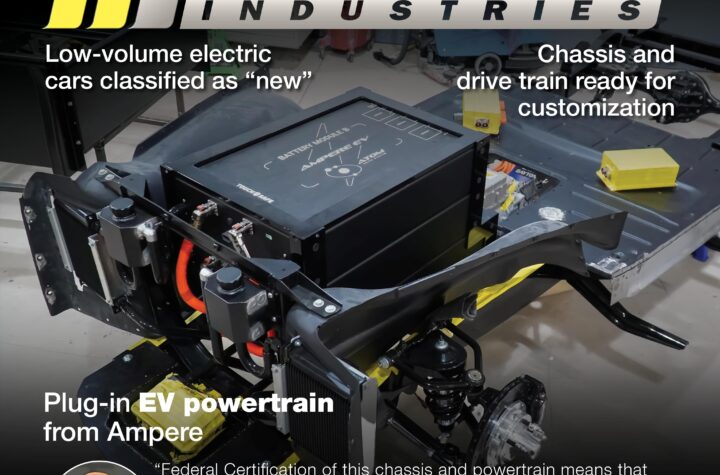
INTRODUCTION
Industrial fans are often used in applications that involve blowing or sucking of moisture or other media as well as drying and cooling. The amount of air required and the positive or negative pressure necessary for a particular purpose are also highly dependent on the type of equipment used. Devices differ mainly in terms of the design of the fan (impeller and housing), the speed and power of the motor, and the size of the equipment.
The wide variety of applications often requires targeted adjustments to the ventilation characteristic curve and an energy-efficient design of the peak efficiency for the individual system operating points. This is made possible by the appropriate design and configuration of the fan impeller and its speed. Existing fans with known ventilation characteristics are often used as a basis for the preliminary design, as well as empirical calculation methods combined with the expertise of the fan manufacturer. The fan is manufactured and validated on an air test rig to verify the ventilation characteristic curve. The device is then approved or, if necessary, redesigned.
For specific optimization measures or new developments, however, the amount of work involved increases, which is why using specialized Computational Fluid Dynamics (CFD) tools is now a viable option even for small and medium-sized businesses. CFD allows for accelerating the development process and massively reduces the number of manufacturing loops required. Validation of flow simulation methods by comparing simulation results to experimental measurements is critical for success and is usually done when the tool is first introduced within a company. The aim of this article is to compare the predicted characteristic curves for industrial fans obtained with two fundamentally different methods, namely “empirical prediction” and “numerical simulation,” with actual measurements.
The results shown are part of a collaborative project between Elektror airsystems and IMPeTRO automotive engineering. Elektror, the ordering party and one of the world’s leading manufacturers of industrial fans and side channel blowers, provided the CAD models, empirical predictions and measurements.
IMPeTRO automotive engineering, the contractor and an engineering services provider and system developer, was responsible for setting up the virtual air test rig and carrying out the subsequent CFD calculations.
PREDICTING AND MEASURING VENTILATION
For preliminary fan design, Elektror uses its own tools, developed over many years on the basis of empirically validated calculation models. These tools are able to predict the air characteristic curves of centrifugal fans in real time and usually deliver sufficient accuracy. Starting from the Euler line, friction, impact and clearance losses in the impeller and housing, as well as minor deflections of the air in the blade channel are taken into account by means of empirical factors (Figure 1).
However, while very good agreement can be achieved between the predicted and measured values for low- and medium-pressure fans with normal rotational frequencies of around 50 Hz, deviations become significant at higher impeller speeds (> 6,000 rpm) due to increasingly unstable phenomena such as turbulence and detachments. These can only be taken into account to a limited extent in the predictions (see Figure 2). Such deviations are particularly evident in the form of high costs due to additional manufacturing loops when customized designs are produced in small quantities, calling for an optimization of the development process. Here, the mass or volumetric flow rate is measured indirectly by analyzing the differential pressure before and after an orifice plate, this being proportional to the mass flow rate. In addition, the static and dynamic pressures at the outlet of the fan and the temperatures, motor speed and input power are also recorded. In order to obtain a complete ventilation characteristic curve, the system resistance of the fan has to be systematically altered by means of a throttling device consisting of an adjustable flap mechanism which controls the resultant mass or volumetric flow rate. The subsequent flow simulations are validated based on a comparison of the results obtained with STAR-CCM+® with the physical values measured during the real-life experiments (static pressure, total pressure and volumetric flow rate).
NUMERICAL SIMULATIONS USING STAR-CCM+
STAR-CCM+ allows for the complete implementation of all the physical models necessary for modern fan development. The tool enables users to import finished CAD models and perform the complete simulation chain consisting of preprocessor, solver and post-processor all in one single integrated software environment.
DESCRIPTION OF THE PROCESS
The investigated impeller from a high pressure fan can be modeled as a rotating body in a stationary housing. Here, the impeller speed is defined as a variable parameter (nominal speed 6,300 rpm). The model consisting solely of the impeller and casing only allows two operating points on the curve (start and end points) to be recorded. If the pressure at the exit of the measuring section is defined as atmospheric pressure, it establishes the maximum possible volumetric flow rate for the system. The start point of the characteristic curve can in turn be determined by closing the outlet on the housing. However, in order to model a real air-measuring section, the measuring tube with a length of 8,000 mm and a diameter of 300 mm is connected to the fan using an adapter, and the throttle mechanism is modeled as well. An orifice plate with a diameter of 144 mm is positioned inside the tube to enable the mass flow rate to be analyzed. The air flowing through the orifice spreads out behind the orifice plate in the form of a free jet in a limited environment and then strikes the throttle mechanism. From there, the air is fed into the environment.
NUMERICAL MODELS AND SERVER PERFORMANCE
For this series of steady simulations, a first-principle Navier-Stokes solution with the realizable k-epsilon turbulence model and the segregated solver was selected. Furthermore, in-place interfaces were defined. It was later ascertained that an exception has to be made in the case where the system has an impermeable outlet. To ensure a stable convergence in this case, the simulation was carried out using the implicit unsteady solver. In the models investigated, a polyhedral mesh was defined for the region of the fan and a trimmed mesh was used for the tube and the throttle mechanism. A boundary layer with five cells was also modeled. The final model was meshed with around 20 million cells. Meshing was done on a server which had two processors, each with 32 cores and 64 GB of RAM. Even so, the meshing took around 2.5 hours to complete.
SIMULATION RESULTS
In order to obtain the fan characteristic curve, a total of six simulations were carried out for different flap positions of the throttle mechanism. The only variation in the start conditions for the individual simulations was the impeller speed value. These values were determined in real life experiments and were applied to the simulation model.
Figure 4 shows an example of the interaction between the physical phenomena inside the virtual air-measuring section. The velocity distribution inside the measuring section is visualized using a scalar scene. When spiral housing is used, as is common in fans, the distance between the impeller and the housing is not kept constant. These results in an inhomogeneous distribution of the flow velocities within this region (see Figure 4, left). This inhomogeneity of velocity profile can spread further along the connecting piece between the fan and the measuring section. The different speeds at which the accelerated air flow impacts the housing also lead to variations in the pressure distribution on the housing wall. Under certain circumstances, this can result in structural and acoustic problems. To avoid and identify unwanted effects at an early stage, it is therefore important to model the local pressure distribution on the housing surface, something that is possible using STAR-CCM+.
The air exiting the fan continues to be forced towards the orifice plate, causing a free jet to form inside the subsequent tube (see Figure 4, middle). In the simulation, the volumetric flow rate was evaluated directly next to the orifice. However, as the precise numerical description of the free jet has a direct impact on the quality of the simulation results, several simulations were necessary to select the most plausible mesh size for this region. In addition, a local mesh size had to be defined in the narrow areas of the nozzle to fulfill specific requirements of physical phenomena caused by the accelerated flow impacting the throttle mechanism. Here, larger differences in velocity are observed (see Figure 4, right) when air flows through the narrow areas typical for this region and leaves the measuring section.
The simulation was repeated with the throttle flaps in six different settings (MP1 to 6): from a fully closed (MP1) to a fully open exit of the measuring section (MP6). As a result of this series of simulations, it is possible to pinpoint larger differences in the velocity distribution inside the fan housing and in the connecting piece (see Figure 5).
A comparison of the measured and numerically calculated values for the pressure distribution (static and total pressure) and the corresponding volumetric flow rates are also shown in Figure 6. The numerical fan characteristic curves correspond to a 3rd order interpolation scheme. Table 1 shows the corresponding empirical and measured values. From this, it can be seen that the values determined with STAR-CCM+ demonstrate excellent agreement with the measured values as the average difference between the measurements and the simulation results is less than 4.7%. The results of the study also show that the accuracy of the numerical calculation significantly exceeds that of the empirical prediction.
SUMMARY
In this article, the actual measurements of the ventilation characteristic curve of a high-pressure fan are compared with empirical prediction and numerical simulation. Whereas the empirical prediction is inaccurate at high impeller speeds, the numerical calculations using STAR-CCM+ demonstrate excellent agreement with the measured values. The simulation models also allow a detailed observation of the flow processes in the various regions of the fan and their interactions inside the engine. Furthermore, it is also possible to identify measures to improve the flow and the characteristic curve. Additional studies will be carried out to examine measures to simplify the virtual measuring section while maintaining the high level of simulation accuracy to enable the calculation and preparation time to be reduced for further projects.
This work has demonstrated that the simulations carried out using STAR-CCM+ by IMPeTRO automotive engineering can provide valuable support during the development of industrial fans at Elektror in the future and the detailed view into the interior of the fan contributes to a better understanding of flow processes.















More Stories
ROHM’s PMICs for SoCs Adopted in Reference Designs for Telechips’ Next-Generation Cockpits
Southfield Classics utilizes Ampere EV engineering to become the first manufacturer to achieve Low Volume Vehicle Manufacturer Certification
Mosaic Click board from MIKROE delivers global coverage multi-band and multi-constellation tracking ability